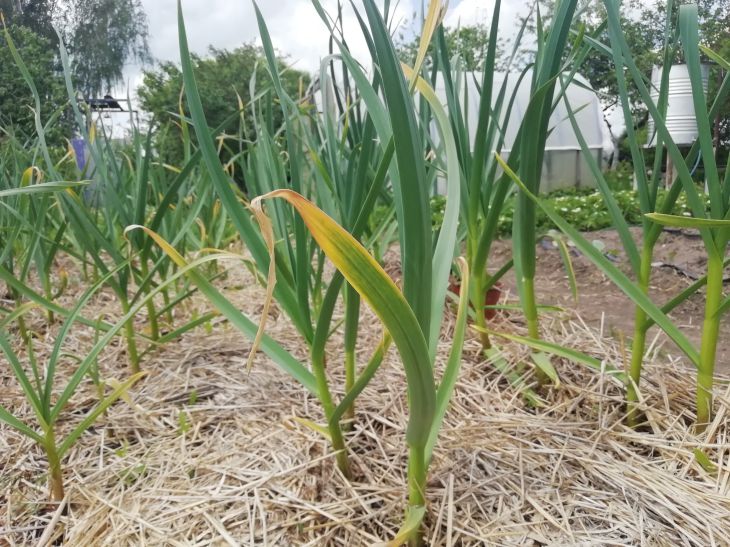Winter garlic sits in the ground until spring and, as soon as the snow melts from the beds, it reminds us of its presence.
This is the most important moment in the life of a plant and a gardener who enjoys winter planting. It would be a shame if garlic that has survived the cold dies from a lack of fertilizer.
Three garlic feedings
From the moment the snow melts, it is time to think about soil fertility. This means that it is time for the first of three seasonal crop fertilizations.
1. First feeding
This supplement should support the emerging seedlings and also provide an incentive for further growth.
At this time, you can use mineral fertilizers (emphasis on nitrogen), and from organic matter, a manure solution will do. Both additives are added immediately after the snow melts.

2. Second feeding
It is better to mark the date on the calendar or make a reminder on your smartphone. The second feeding of garlic should be done no later than 2-3 weeks from the date of the first portion of fertilizers.
A composition is used that can replenish the lack of useful substances that could have been washed away by melt water, rain, or intercepted by activated weeds.
At this stage, phosphorus will be useful, so we give preference (from minerals) to nitroammophoska, and from organics to mullein infusion.
3. Third feeding
It is not related to spring, as it is carried out in the third ten days of June, but it is also important. At this stage, it is necessary to replenish the lack of phosphorus.
Superphosphate is mainly used – 1 tbsp. plus 200 g of ash per 10 l of water.








